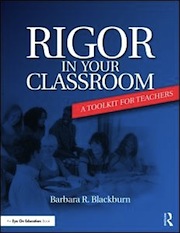Use Writing Activities to Bond with New Students
One of the most important factors in student achievement is a positive connection with the teacher. You probably already know how important it is to build that relationship early in the school year. An easy way to bond with kids is through writing. Let’s take a look at two specific activities that help you get to know your new students.
Vision Letters
First, consider using vision letters. Ask your students to imagine it is the last day of school. Being in your social studies class, for example, turned out to be your (the student’s) best year ever. What happened? What made it the best year? What did you do? What did your teacher do? Why was sixth grade social studies the best year ever?

One note—if you and the other teachers at your school like this activity, don’t make the students write a letter in each class—it dilutes the effectiveness. Have them write one in the first class, and address each individual class in a paragraph.
“Where I’m From” Poems
Another excellent strategy for getting to know students is a “Where I’m From” poem or rap. It allows students to share their lives with you, which will create a strong connection. (Here’s how one school district presented the activity. And here’s another strategy. Read about the original “Where I’m From” poem here.)

Once the students have come up with a few thoughts per heading, they can begin to put their poem together. Stress to students that perfection is not the purpose; the purpose to allow others to see you differently from what they may normally see or to learn more about you. Here’s an example by a colleague of mine:
I Am From
I am sweet dark caramel.
I am from royalty, strong backs and bones.
I am Harriet Tubman, Martin Luther King, Sojourner Truth, Barack Obama.
I am the creator of a legacy for which my mother and father laid the foundation.
I am from struggles and despair.
I am love, peace, strength, courage.
I am from a place deep within my soul that makes me smile.
Let them know you care
Connecting with your students is a critical part of your job. After all, the old saying, “they don’t care how much you know until they know how much you care” is true. These activities move beyond the traditional “write what you did over summer vacation” into more authentic writing, which will let you build a stronger relationship with your students. And be sure to write your own and share it with your students; it will help them see you as a “real person” too!

Barbara’s latest book, Rigor in Your Classroom: A Toolkit for Teachers, was published in May 2014 by Routledge/Eye on Education.































